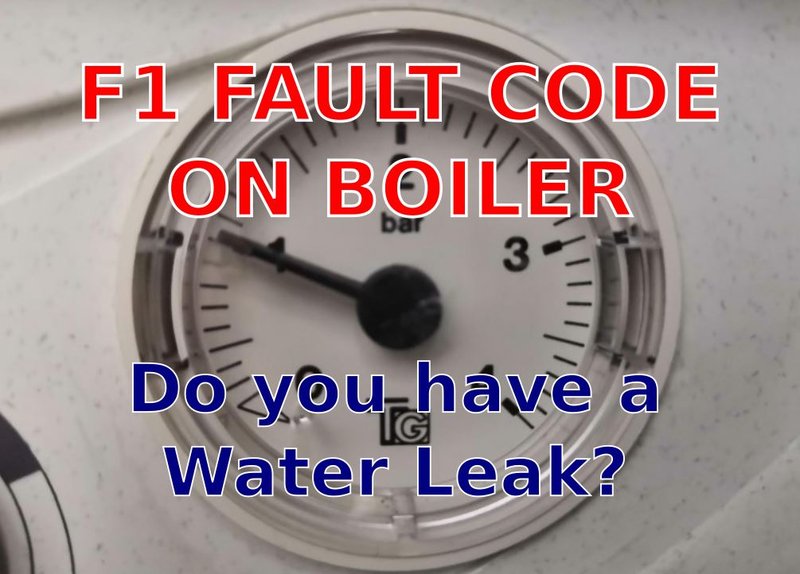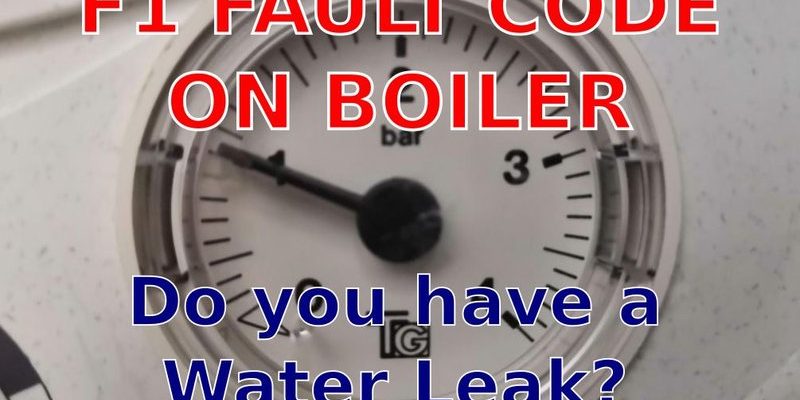
Error codes can feel a bit like a secret language, especially if you’re not gadget-savvy. But they’re really just the water heater’s way of communicating. The code F1, in particular, is essentially your heater’s way of waving a little red flag, indicating that something’s amiss with its air pressure system. Think of it as your water heater struggling to catch its breath. It might sound complicated, but let’s break it down together so you can get your cozy morning back on track!
Understanding Bosch Water Heater Error Code F1
When your Bosch water heater flashes “Error Code F1,” it’s trying to tell you there’s a hiccup in the air supply system that’s crucial for its operation. Picture your water heater like a person trying to whistle a tune; it needs a clear passageway to create that whistling sound smoothly. In the same way, your water heater needs unobstructed airflow to function properly. The F1 error typically points to an issue with either the air intake or exhaust, which could be blocked or not functioning as it should.
But why does this matter? Well, the air supply system is vital for mixing air with gas to ignite and heat your water efficiently. If there’s a blockage or an imbalance, the heater might not ignite correctly, leading to the dreaded F1 error. Moreover, just like how a blocked nose can hamper your breathing, a blocked air supply can prevent your water heater from performing its job, leaving you with cold water.
It’s important to address this issue promptly. Ignoring it could lead to bigger problems down the line, potentially damaging the unit or even causing a safety hazard. So, what should you do? The first step is to inspect the air vents or pipes for any visible blockages, like dirt or debris. If you’re comfortable, you can gently clean these areas to try and resolve the problem.
Common Causes of Error Code F1
You might be wondering, “What exactly causes this air pressure problem in the first place?” Well, there are a few usual suspects. First off, environmental factors can play a big role. For instance, if your water heater is located in a dusty area or if there are construction activities nearby, dust and debris can easily find their way into the air intake or exhaust pipes. This buildup can block the necessary airflow.
Additionally, regular wear and tear or lack of maintenance can also contribute to this error. Over time, components like fans or air vents can gather dirt and grime, much like how a vacuum filter becomes clogged after extended use. Just as you’d clean or replace your vacuum filter to keep it running smoothly, your water heater needs similar attention to keep the air flowing freely.
Sometimes, it’s not just dirt that’s the culprit. Weather conditions, like extreme cold, can cause condensation within the pipes, leading to blockages from ice or other obstructions. It’s similar to how your car’s exhaust can sometimes freeze up in harsh winter conditions. Keeping these factors in mind can help you pinpoint the cause of the F1 error and address it more effectively.
Steps to Solve the F1 Error Code
So, you’ve identified the F1 error — now what? The first thing you should do is power off the water heater to ensure safety. Once that’s done, take a look around the air intake and exhaust vents. Are they visibly blocked or dirty? If so, a gentle cleaning with a soft brush or cloth can do wonders. Remember, safety first! Ensure the unit is cool and you’re not using any sharp objects that might damage components.
If cleaning doesn’t resolve the issue, it might be time to check if the fan is working properly. A malfunctioning fan can cause air pressure issues. Listening for unusual noises or checking if it’s spinning smoothly can offer clues. If you’re not sure how to check the fan’s operation, consider contacting a professional to avoid further complications.
In some instances, the problem might be more internal than external. If you’ve cleaned the vents and checked the fan but the issue persists, there could be a problem with the air pressure sensor itself. This kind of troubleshooting is best left to the professionals, who can safely assess and repair the unit without causing additional damage.
Preventative Tips to Avoid Future Errors
To keep the F1 error at bay, regular maintenance of your Bosch water heater is key. Just like how you regularly service your car to keep it running smoothly, keeping your water heater in check can prevent many common issues. Make a habit of inspecting and cleaning the air intake and exhaust vents every few months, especially if your heater is in a dusty area or you notice any unusual performance dips.
Additionally, scheduling an annual professional inspection can catch potential problems before they turn into error codes. A technician can thoroughly clean the unit, check for wear and tear, and ensure everything is operating as it should. Think of it as a yearly health check-up for your heater — preventing small issues from becoming costly repairs.
Finally, stay alert to any changes in your water heater’s performance. If it’s taking longer to heat water or making strange noises, these could be early signs of airflow issues. Addressing them early can save you from the inconvenience of an error code interrupting your morning routine. Remember, a little proactive care can go a long way in ensuring your hot showers remain uninterrupted.
